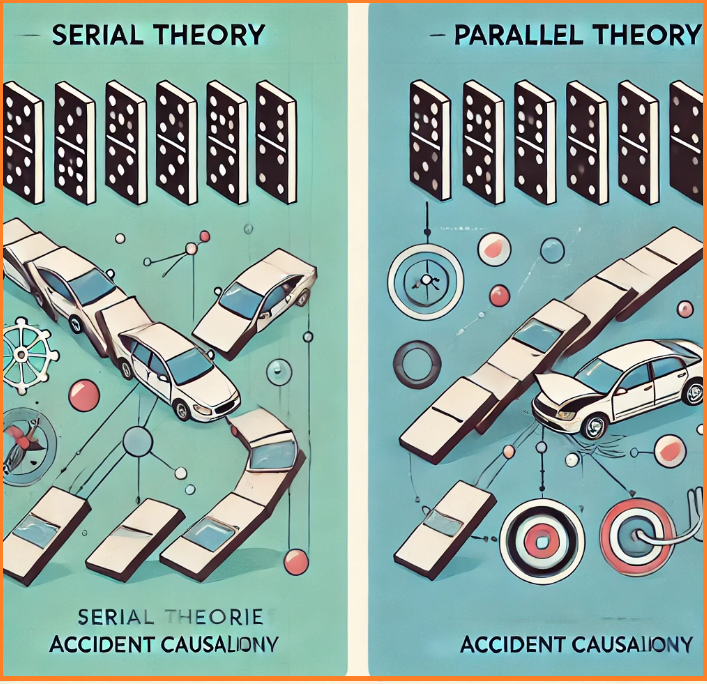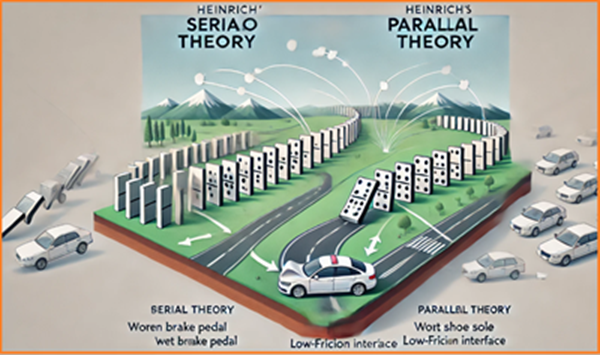Accident causation theories help us understand how and why accidents happen by analyzing contributing factors. Two primary frameworks for understanding these factors are serial and parallel theories.
Contents
Heinrich’s Domino Theory: A Serial Theory
Heinrich’s Domino Theory is a classic example of a serial accident causation theory. It suggests that accidents occur due to a sequence of events, much like a line of falling dominoes. In this framework, each event directly leads to the next. If one domino is removed or stopped, the chain reaction is interrupted, and the accident can be prevented.
For example, imagine a driver struggling to stop a car. A serial theory might identify that the driver’s foot slipped from the brake pedal, causing the failure to stop. Here, the cause-and-effect relationship is linear: the slip directly led to the inability to brake.
Parallel Accident Causation Theory
In contrast, parallel theories consider multiple factors interacting simultaneously to cause an accident. Instead of a single chain of events, these theories recognize that accidents often result from a combination of conditions or failures occurring together.
Taking the same example of a driver struggling to stop, a parallel theory would investigate multiple contributing factors. It might find that the driver’s foot slipped because the brake pedal was worn and slippery. There could have been a wet substance on the sole of the driver’s shoe. Moreover, the interaction between the pedal material and the shoe sole could have created a low-friction surface, further reducing grip.

Key Differences Between Serial and Parallel Theories:
- Causality: Serial theories emphasize a linear, step-by-step cause-and-effect relationship, whereas parallel theories focus on the interplay of multiple factors.
- Prevention: In serial models, removing one cause can prevent the accident. In parallel models, multiple contributing factors must be addressed simultaneously.
- Analysis Approach: Serial theories trace a single path to failure, while parallel theories explore a broader system of interacting influences.
Understanding both serial and parallel theories is crucial for comprehensive accident analysis and effective preventive measures. By combining insights from both approaches, safety professionals can better identify risks and design interventions to reduce accidents.





